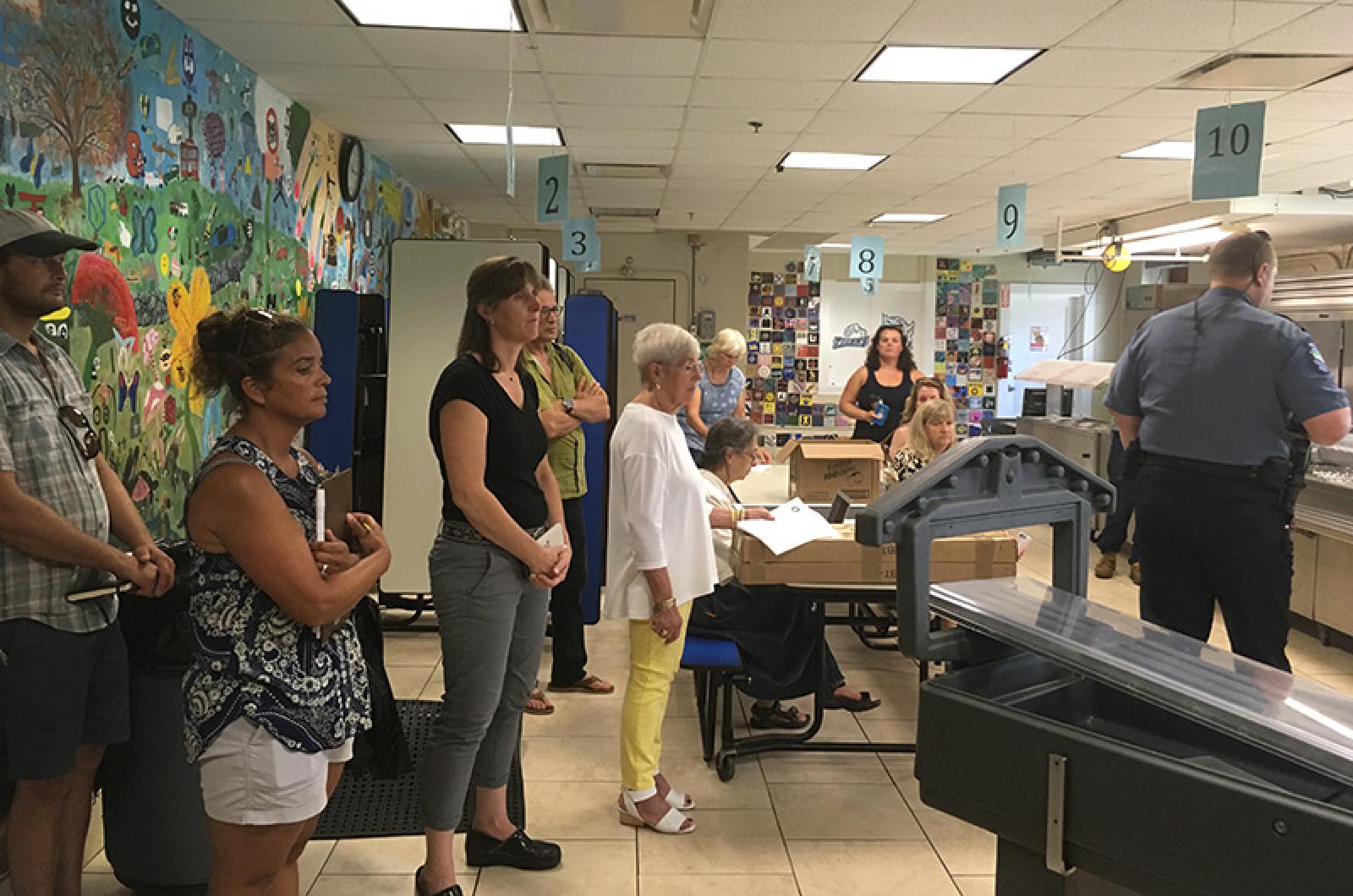Floors buckled from moisture, failed windows, a cafeteria so small it fails to meet state codes, mold in a kindergarten classroom, an outdoor trailer used for instruction that has no bathroom.
These were just a few of the inadequate conditions documented during a tour of the Tisbury School this week attended by a large group of town officials.
School principal John Custer led the tour on Tuesday morning.
He was joined by the Tisbury school committee and board of selectmen. The brigade also included members of the planning board, the board of health, police department, facilities management, department of public works, school staff, wastewater management, the superintendent’s office and the public.
On a hot, sticky morning in the busiest week of summer, three weeks before the start of school, the message was clear: the Tisbury School needs serious work. Mr. Custer said the problems threaten the ability of school leaders to provide students with a safe and equitable education.
“We want to make sure that safety issues are addressed and accessibility issues are addressed,” he said, outlining immediate priorities.
One primary concern has been an outside trailer unit, dubbed the Little White House, where many English learning and remedial support classes are held. “Those are our neediest students,” Mr. Custer said during a walk through the unit’s small classrooms. He said the unit has no bathroom and effectively segregates students with special needs from the other students in the main building. “It’s a civil rights issue,” the principal said.
Mr. Custer said the Tisbury School serves the highest number of English learning students on the Island, about 75 last year.
Issues with the building’s exterior abound. Town administrator Jay Grande provided an estimate for building envelope renovations totaling more than $5 million.
“Basically we have 150-plus windows in the building that are getting to the age when they’re fogging . . . and in need of repair,” facilities manager Kirk Metell. He said rusted and cracked lintels had allowed water and moisture to seep inside classrooms.
“The floors are in bad shape because of water getting into the building,” Mr. Metell said. Mr. Custer later showed the group many of the windows that have become so foggy they obscure views outdoors.
Concrete steps leading to the school’s main entrance are crumbling and need replacement, Mr. Metell said. The school’s main parking lot is cracked and lacks proper signs and lighting.
“This is stuff that shouldn’t wait for a building project,” selectman James Rogers observed.
Police Lieut. Eerik Meisner said he would like to see better security outside the school, including more fencing and security cameras. Proximity to busy roadways was also a concern.
“The school is nestled in a neighborhood,” Mr. Custer said, “and because we are so conveniently located in a neighborhood area, we get a lot of traffic.”
Inside the school, limited classroom space is an ongoing challenge. Mr. Custer led the way to a single resource room on the second floor that houses special education courses for students in grades K through 4.
“This is one of the rooms the state is less than pleased with us about,” Mr. Custer said.
Space problems were evident throughout. The gymnasium is not regulation-sized, so the bleachers cannot be fully extended during games. The school band practices in what used to be a locker room beneath the stage. Some grades take computer classes in the library. The small cafeteria means there are five separate lunch periods, ranging from 18 to 25 minutes.
“It’s substandard and undersized,” said town health agent Maura Valley of the lunchroom. “It doesn’t meet any of the current codes for food prep or floor space for kids.”
Ventilation is also a concern. Many areas of the building lack air conditioning. Moisture in the air has caused floorboards in some rooms to swell and buckle. A frozen ventilator in the library last winter led to a leak that caused mold in the kindergarten classroom below. Remediation is underway in the space.
The problems are not limited to the oldest parts of the building. An addition that dates to the 1990s has problems as well. Mr. Custer said that area of the school has suffered the largest number of roof leaks.
“The new is in worse shape than the old,” Selectman Rogers observed.
A plan for a $46.6 million new school failed to win voter approval in April.
The next steps have not yet been mapped out, but selectmen and the school committee plan to convene a working session in September.









Comments (8)
Comments
Comment policy »